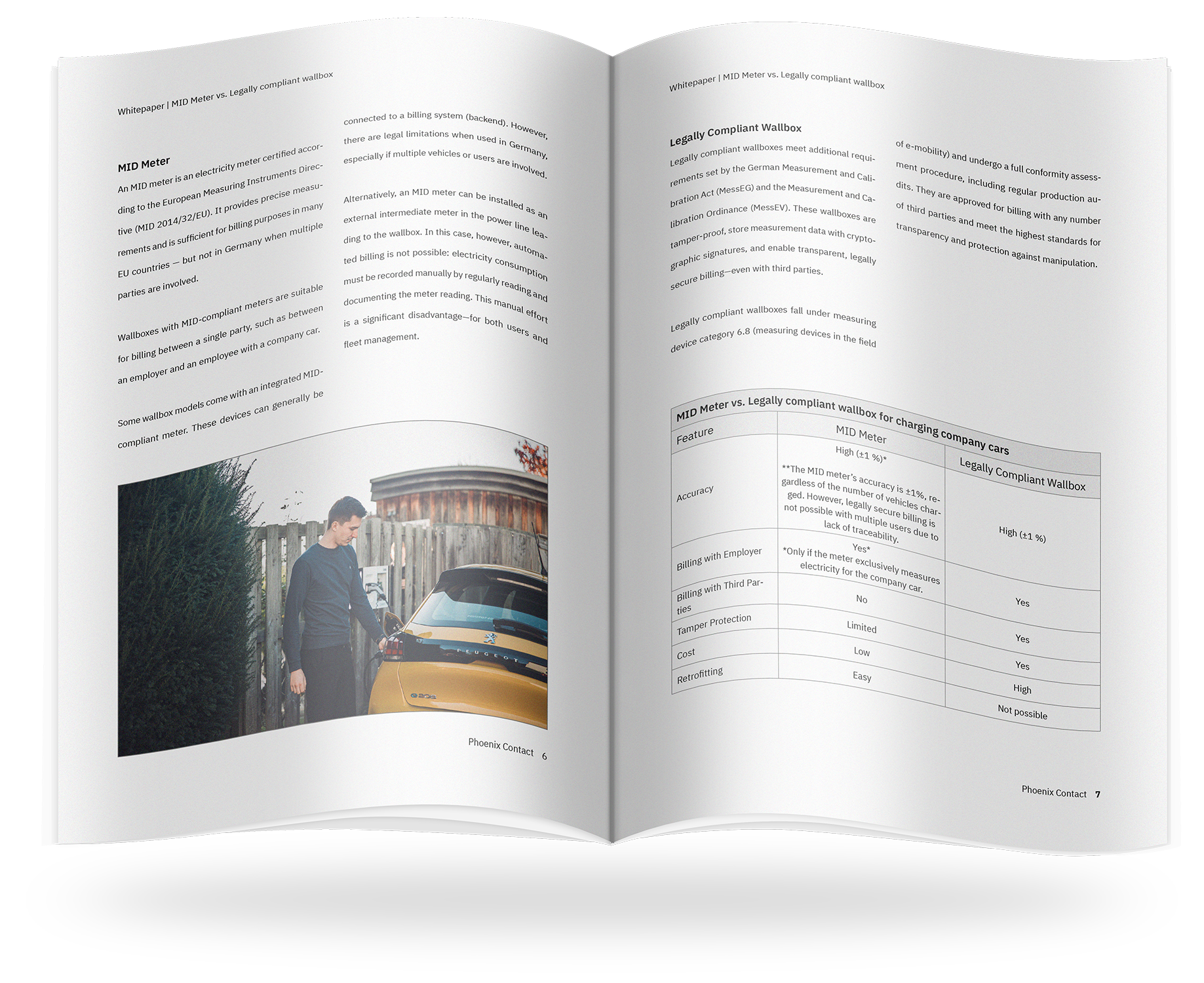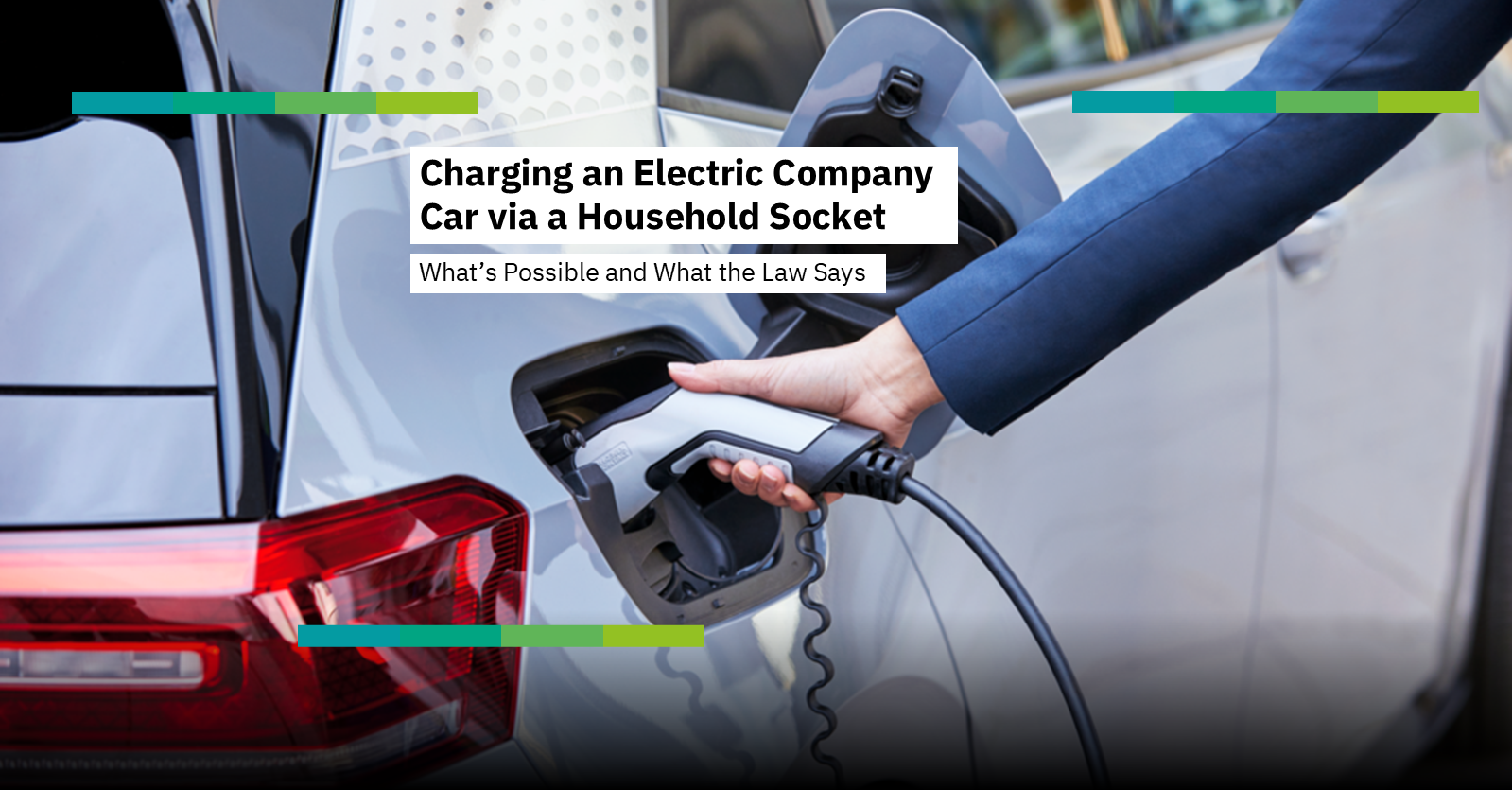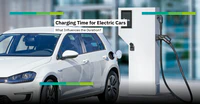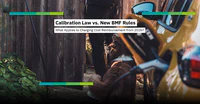Charging an electric company car via a standard household socket may seem practical and cost-effective at first glance. However, what is technically feasible is not always advisable—especially in a professional context. This article outlines the advantages and disadvantages, legal requirements, and explains why a wallbox is usually the better solution.
Socket as a Charging Point: Convenient but Problematic
Household sockets are widely available, making them appear to be a simple solution for charging electric vehicles.
Advantages
No additional infrastructure required
Suitable for occasional or short-term charging
Disadvantages in everyday use and for company cars
Long charging times: A 50 kWh battery can take up to 20 hours
Limited power output: Standard sockets (Schuko) deliver a maximum of 2.3 kW – wallboxes up to 22 kW
Safety risks: Overheating, overload, and cable fires are possible, especially with older installations
Inefficiency: Charging losses of up to 10% are common
Guide to choosing a Wallbox: Your comprehensive Guide!
Our guide provides you with important insights into the details you should consider before purchasing a wallbox. Learn about the key criteria to make the right choice for your home and company car.
REQUEST GUIDE
Safe Charging with Certified Installation
Occasional charging via a household socket is not inherently dangerous—provided that:
The electrical installation has been inspected by a certified electrician
A modern charger with safety features is used
No other high-consumption devices are active on the same circuit during charging
For regular charging, a wallbox is strongly recommended. It is safer, faster, and more efficient.
Charging a Company Car at Home: What Applies to Billing?
Employees who charge their electric company car at home and want to reimburse electricity costs with their employer must follow specific guidelines:
Legally compliant wallbox or retrofit solution: Only this allows for accurate and legally secure measurement of electricity consumption in kilowatt-hours. If no compliant wallbox is available, the Charge Repay Service offers a retrofit solution. This enables the use of existing wallboxes that do not meet legal metering standards.
Socket not suitable: Transparent and tamper-proof documentation is not possible with a standard socket.
Until the end of 2025, a tax-free flat rate of up to €70 per month was possible if there was no charging option at the employer’s premises. From 2026, this option will no longer exist. Instead, companies can reimburse costs either based on actual consumption and current electricity or using the electricity price flat rate – both methods require proof of the charged electricity amount. For more details, see: EV Charging Reimbursement from 2026 .
Retrofitting with MID Meter, Legally Compliant Wallbox, or Charge Repay Service?
Discover your options for legally compliant billing of company car charging at home: When is retrofitting with an MID meter sufficient, when is a legally compliant wallbox required—and how does the Charge Repay Service bridge the gap without needing to replace your wallbox?
REQUEST WHITEPAPER
Technical and Tax Requirements
To ensure legally compliant billing, the following points are essential:
The wallbox must have a MID-certified electricity meter, if only the company car gets charged. Otherwise a calibration law compliant wallbox is required
Electricity consumption must be recorded separately and integrated into the billing system
The installation must be registered with the grid operator
The employer should be involved in the selection and purchase process
Conclusion: Socket Only as a Last Resort
Charging an electric company car via a household socket is technically possible—but only advisable as a short-term emergency solution. For regular charging and legally compliant billing, a wallbox is indispensable. It offers greater safety and convenience and enables transparent and tax-optimized reimbursement of electricity costs.




